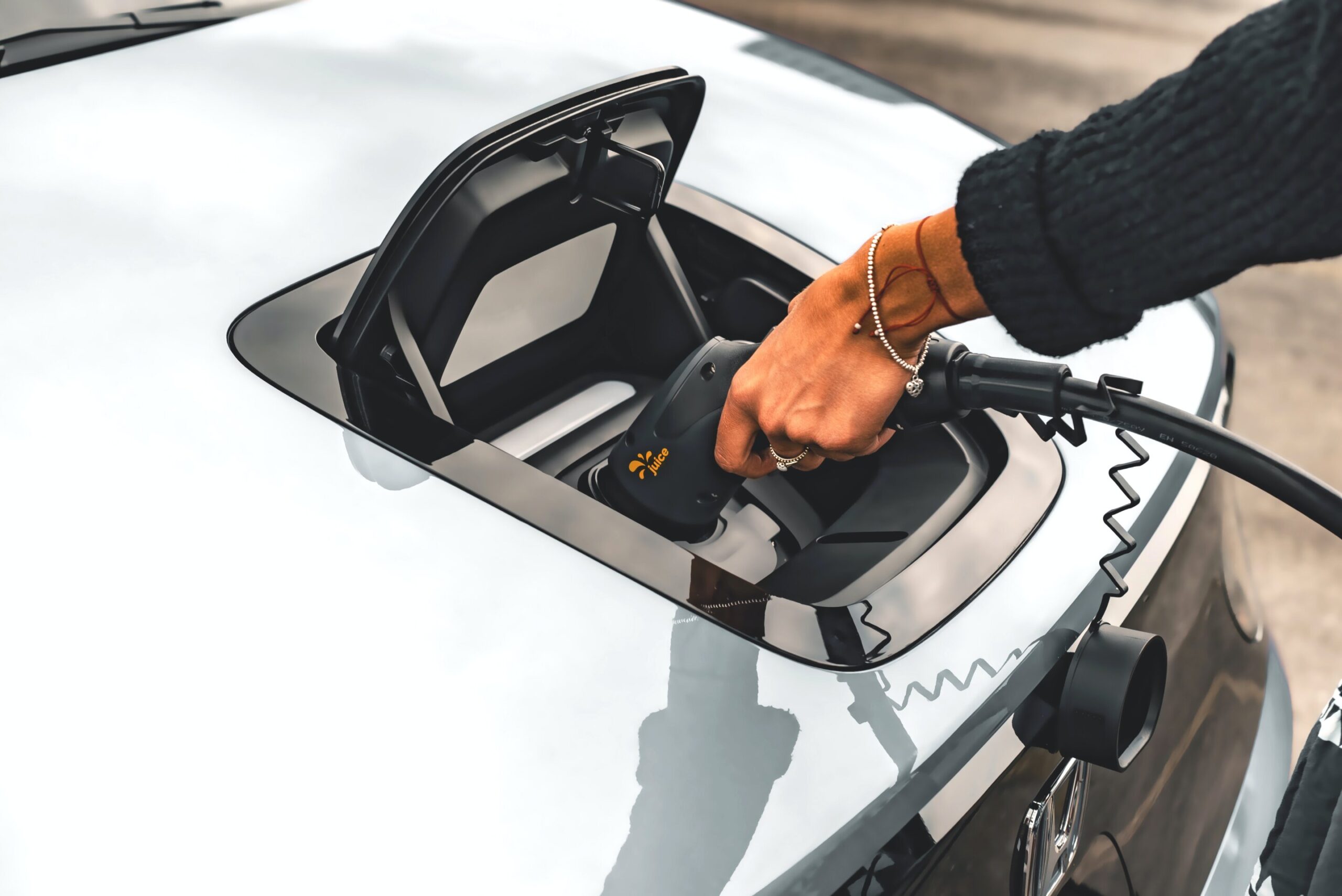Tech
China’s new controls on rare earths create challenges for the West’s plans for green tech

China recently announced that it was putting new controls on the export of rare earth elements, sparking a new round in the country’s ongoing trade war with the US.
Donald Trump responded by threatening to ramp up tariffs on Chinese goods by a further 100%. This will all be under discussion when China’s president Xi Jinping and Trump meet on October 30 at the Asia Pacific Economic Conference in South Korea.
China has built an effective monopoly over rare earth metals, the 17 metallic elements that are not actually rare but are very difficult to mine and process. Most electric vehicles (EVs), smartphones or solar panels depend on these rare earths.
China mines 70% and refines 92% of these increasingly important metals, and manufactures 98% of the world’s rare earth magnets used in EVs, electronics, medical devices and other clean tech. In recent years, these essential minerals have become a crucial part of China’s economic agenda as it tries to focus on “high quality development” in advanced and green technology
The recent announcement from Beijing has raised concerns about global access to these essential minerals. If the supply of rare earths available to the outside world diminishes, the cost of manufacturing green tech would rise and drive up prices worldwide. If there is anything that would stall the development of the green economy, this could be it.
In response to the announcement, Trump initially suggested he might cancel an upcoming meeting with Chinese president Xi. However, the meeting now looks set to go ahead, and access to rare earths is likely to be high on the agenda.
Trump had also announced that he was considering a ban on exports to China of all products made with US software such as laptops and jet engines, and industrial equipment. This might reduce Beijing’s ability to design essential components for AI chips, hampering its bid for dominance in clean tech.
Prior to Trump’s latest threats, electric vehicles coming from China had already been hit by a 100% US tariff, while import duties for solar cells and lithium batteries stood at 50% and 25% respectively.
But the result might have surprised Trump. As US-made goods are exempt from tariffs from paying tariffs, Chinese firms have set up production sites in the US to circumvent Trump’s tariffs. Instead of helping domestic US companies, Trump’s policies have done the opposite.
For instance, the solar manufacturing capacity of Chinese firms based in the US has grown so large that it now accounts for 39% of all solar panel energy output in the country versus only 24% from US firms.
But even if Chinese clean tech sales in US were severely affected by the tariffs, most of China’s green tech is heading elsewhere.
Based on my estimations using data from the energy thinktank Ember, Chinese green tech exports globally in 2024 were valued at US$184.06 billion (£139 billion), while total exports to the US stood at US$20.66 billion. The US market accounted for only 11.2% of the total proportion of total Chinese green tech exports, while that number from January to September 2025 has dipped to 7.8%.
Compared to the EU (29.95%) and Asian market (27.97%) in 2024, the US market appears relatively small. So higher tariffs would harm China’s economy, but the damage may not be as substantial as Trump might imagine. However, the EU’s plans to meet climate targets is massively dependent on these Chinese exports.
Problems for Beijing?
The US has already put restrictions on which technologies China can buy from the US. China can still manufacture electric vehicles, solar panels and wind turbines without US software. But without the most advanced technologies from the US, Chinese firms will have fewer options.
While there are indications that the tech gap between Washington and Beijing may be shrinking, the US still possesses some of the most advanced technologies that are crucial for green tech development. These include advanced semiconductors, which are needed to make AI chips.
Such components and machinery are essential to China’s claim to green leadership since they allow users to automate EVs, solar panels and wind turbines, while ensuring their efficiency and optimizing energy use. Simply put, without the best semiconductors and the AI chips, China won’t be able to create world-leading clean tech.
China may have metals but without US chips and software, its green economic momentum might stall—at least until China’s semiconductor and AI tech catches up with the US. Chinese economic progress and its green leadership may be dependent on gaining better trade deals, even if it does still have a massive advantage.
This article is republished from The Conversation under a Creative Commons license. Read the original article.![]()
Citation:
China’s new controls on rare earths create challenges for the West’s plans for green tech (2025, October 30)
retrieved 30 October 2025
from https://techxplore.com/news/2025-10-china-rare-earths-west-green.html
This document is subject to copyright. Apart from any fair dealing for the purpose of private study or research, no
part may be reproduced without the written permission. The content is provided for information purposes only.
Tech
The Best Cozy Earth Pajamas Deal We’ve Seen All Year

I love having a whimsical, comfortable wardrobe, and that doesn’t apply just to daytime clothes. My pajama collection is quite extensive, with the added requirement that each pair be both cooling and extra soft. I’m someone who overheats easily in her sleep, and with sensitive skin, it’s not a winning combination.
I’ve been growing my Cozy Earth pajama collection for years, usually getting a new set during Black Friday. Obviously, that shopping event has come and gone, but this sale gives you one more chance. And, believe it or not, it’s even better than what Cozy Earth ran sale-wise for its pajamas during Cyber Week.
Tech
We Just Found Out Taylor Swift Sleeps on a Coop Pillow—They’re Having a Flash Sale to Celebrate

While I’m a mattress and sleep product expert, thanks to years of hands-on experience, I’m also aware that my opinion is not the end-all, be-all for everyone. However, when a megastar is also a fan of a product you’ve reviewed, it’s a good confirmation that you’re on the right track.
Taylor Swift, as it would turn out, is also a fan of Coop Sleep Goods—which we can confirm based on this December 10 Late Show With Stephen Colbert appearance.
Coop’s got some of our favorite pillows, particularly the Original Adjustable pillow. It comes in three shapes: the Crescent, the Cut Out, and the Classic, which is a traditional rectangular shape. I love (and regularly sleep on) the Crescent, which has a gentle curve on the bottom to allow for movement while maintaining head and neck support.
Tech
Nvidia Becomes a Major Model Maker With Nemotron 3

Nvidia has made a fortune supplying chips to companies working on artificial intelligence, but today the chipmaker took a step toward becoming a more serious model maker itself by releasing a series of cutting-edge open models, along with data and tools to help engineers use them.
The move, which comes at a moment when AI companies like OpenAI, Google, and Anthropic are developing increasingly capable chips of their own, could be a hedge against these firms veering away from Nvidia’s technology over time.
Open models are already a crucial part of the AI ecosystem with many researchers and startups using them to experiment, prototype, and build. While OpenAI and Google offer small open models, they do not update them as frequently as their rivals in China. For this reason and others, open models from Chinese companies are currently much more popular, according to data from Hugging Face, a hosting platform for open source projects.
Nvidia’s new Nemotron 3 models are among the best that can be downloaded, modified, and run on one’s own hardware, according to benchmark scores shared by the company ahead of release.
“Open innovation is the foundation of AI progress,” CEO Jensen Huang said in a statement ahead of the news. “With Nemotron, we’re transforming advanced AI into an open platform that gives developers the transparency and efficiency they need to build agentic systems at scale.”
Nvidia is taking a more fully transparent approach than many of its US rivals by releasing the data used to train Nemotron—a fact that should help engineers modify the models more easily. The company is also releasing tools to help with customization and fine-tuning. This includes a new hybrid latent mixture-of-experts model architecture, which Nvidia says is especially good for building AI agents that can take actions on computers or the web. The company is also launching libraries that allow users to train agents to do things using reinforcement learning, which involves giving models simulated rewards and punishments.
Nemotron 3 models come in three sizes: Nano, which has 30 billion parameters; Super, which has 100 billion; and Ultra, which has 500 billion. A model’s parameters loosely correspond to how capable it is as well as how unwieldy it is to run. The largest models are so cumbersome that they need to run on racks of expensive hardware.
Model Foundations
Kari Ann Briski, vice president of generative AI software for enterprise at Nvidia, said open models are important to AI builders for three reasons: Builders increasingly need to customize models for particular tasks; it often helps to hand queries off to different models; and it is easier to squeeze more intelligent responses from these models after training by having them perform a kind of simulated reasoning. “We believe open source is the foundation for AI innovation, continuing to accelerate the global economy,” Briski said.
The social media giant Meta released the first advanced open models under the name Llama in February 2023. As competition has intensified, however, Meta has signaled that its future releases might not be open source.
The move is part of a larger trend in the AI industry. Over the past year, US firms have moved away from openness, becoming more secretive about their research and more reluctant to tip off their rivals about their latest engineering tricks.
-

 Politics1 week ago
Politics1 week agoThailand launches air strikes against Cambodian military: army
-

 Fashion1 week ago
Fashion1 week agoGermany’s LuxExperience appoints Francis Belin as new CEO of Mytheresa
-

 Politics1 week ago
Politics1 week agoZelenskiy says Ukraine’s peace talks with US constructive but not easy
-

 Politics5 days ago
Politics5 days agoTrump launches gold card programme for expedited visas with a $1m price tag
-

 Tech6 days ago
Tech6 days agoJennifer Lewis ScD ’91: “Can we make tissues that are made from you, for you?”
-

 Business5 days ago
Business5 days agoRivian turns to AI, autonomy to woo investors as EV sales stall
-

 Entertainment1 week ago
Entertainment1 week agoToo big to fail? IndiGo crisis exposes risks in Indian aviation
-

 Tech5 days ago
Tech5 days agoGoogle DeepMind partners with UK government to deliver AI | Computer Weekly


















